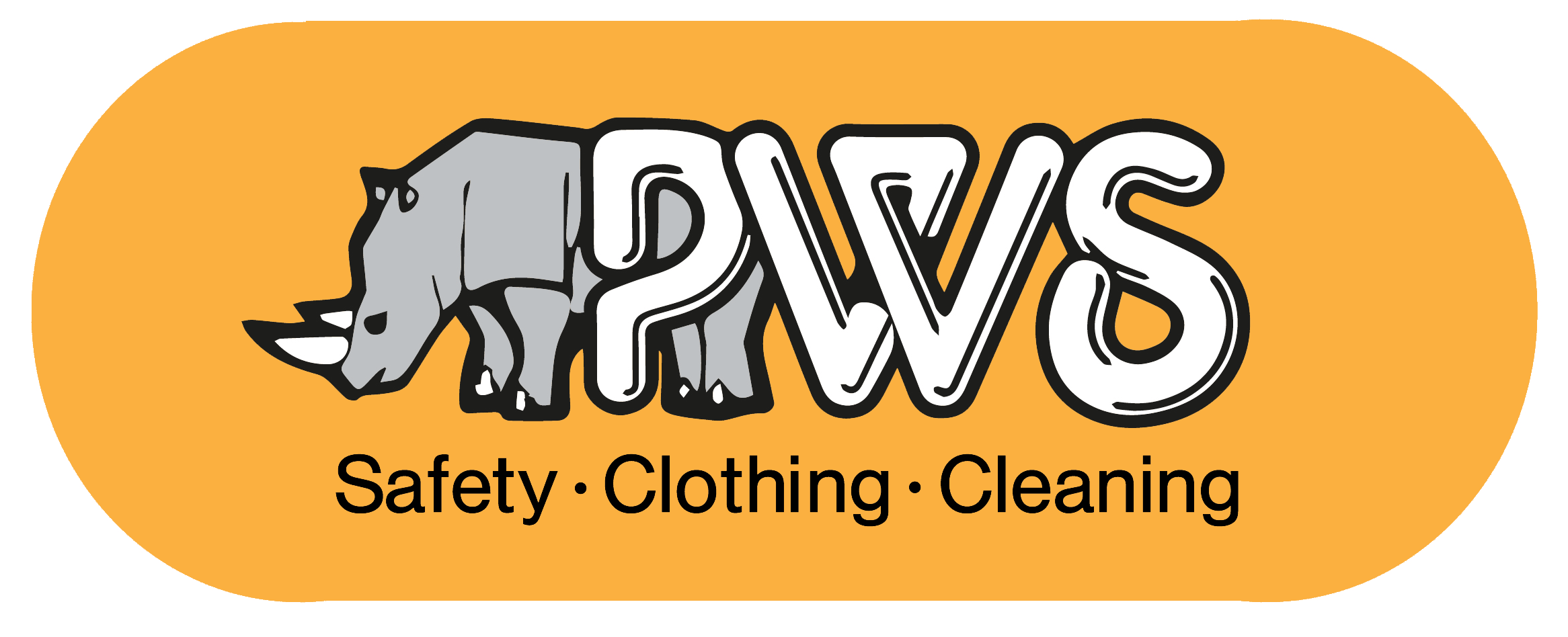Identifying hazards and minimise risk of harm in your workplace.
Who is this article for?
This article aims to provide information to organisations regarding their responsibility towards protecting their employees from skin issues with their hands. Many employers don’t realise they have legal duties to assess the health risks from skin exposure to hazardous substances at work.
Whether you’re a self-employed builder with a small team of construction employees, or a procurement manager within a large Housing Association with hundreds of staff, this article is designed to provide useful information and additional resource links. This article will also help to identify the tasks and substances that may cause harm in your workplace and advise practical steps to control the risks, giving you information to support you in complying with safety regulations.
Employer obligations around skin exposure risks
Employers must comply with the Control of Substances Hazardous to Health Regulations 2002 (COSHH) by assessing risks; providing and maintaining adequate control measures; providing information, instruction, and training, and, in appropriate cases, providing health surveillance. As an employer, it is your responsibility to ensure that all your employees who wear protective gloves should know:
• What gloves to wear and when to wear them
• How to look after their gloves
• How to put them on and take them off without contaminating the skin
• The limitations of gloves as a control measure and how to dispose of them safely.
If it can be clearly shown that there are situations at work where risks to health and safety are unavoidable and methods of control other than protective gloves are not reasonably practicable, employers have further legal duties to provide suitable protective gloves to any employee who may be exposed to such risk. Employers can face civil liability claims for damages if they are proven to have been negligent.
Employee Health and Safety obligations in the workplace
Employees should take reasonable care of their own and other people’s health, following their training and co-operating with their employer on health and safety protocols. Employees must use their PPE in accordance with the training given and report any loss of or obvious defect with the equipment.
The importance of protecting skin from exposure to hazardous substances
The skin is made up of two main layers, the epidermis and dermis. The outer layer, the epidermis, provides the skin’s barrier function. However, it is not a perfect barrier – it limits the amount of material that can pass through it to affect other parts of the body. If the moisture content of the epidermis is too high or too low, it can affect the skin’s barrier properties. If it is too dry, e.g., when working in a low-humidity room, the skin dehydrates, becomes rough, thickened, and flaky and can crack through loss of elasticity. If it is too moist, e.g., due to prolonged contact with water, the skin becomes over-hydrated, impairing its barrier function. Some substances can pass through the skin and cause diseases in other parts of the body. Other substances can cause ‘local effects’, which are limited to the skin itself.
There are four main groups of substances that can cause skin problems, mostly at the site of skin contact:
Corrosive substances that can lead to burns:
Severe skin damage (resulting in burns) can follow brief skin contact with a corrosive substance, e.g., wet cement, strong acids, and alkalis. This may lead to the skin scarring.
Irritant substances that can lead to irritant contact dermatitis:
Irritant contact dermatitis (ICD) is a skin reaction leading to inflammation at the site of contact. Dry, red and itchy skin is a common first sign. Swelling, flaking, blistering, cracking and pain may follow. Usually, the inflammation subsides once the skin has healed. However, repeated contact may lead to ‘hyper-irritability’ – the skin becomes inflamed more readily than normal. ICD can develop after regular contact with mild irritants such as detergents, weak acids or alkalis and some solvents. It can also develop through ‘wet work’ which can cause the skin to over-hydrate. Wet work is a leading cause of ICD but often goes unrecognised.
Sensitising substances that can lead to allergic contact dermatitis:
Allergic contact dermatitis (ACD or ‘skin sensitisation’) is an immunological response to a sensitising substance (allergen). The signs and symptoms are difficult to distinguish from ICD. Sensitisation can develop over time, and it may be weeks, months or even years before it becomes apparent. However, once a person has developed an allergy (is ‘sensitised’), tiny amounts of the allergen will trigger ACD. By then, the only remedy is to prevent further exposure. Chemicals can also enter the body through the openings in the skin surface (e.g., around hair follicles and through the ducts of the sweat glands. Urticaria is a skin condition that typically presents as a wheal (swelling) and flare (red mark) reaction. Skin irritants or allergens may cause it. It is different from ICD and ACD in that it quickly follows skin contact and disappears again within hours.
Substances that cause other diseases, e.g., urticaria, acne, skin cancer.
Skin cancer is one of the most common types of cancer. Signs of skin cancer may include a scaly patch of hard skin, a red lump or spot, an ulcer, a new mole, or a patch of skin that bleeds, oozes or has a crust. Exposure to certain chemicals, such as polycyclic aromatic hydrogen (PAH) compounds can cause skin cancer. Skin cancer is a particular problem for outdoor workers exposed to ultraviolet rays from the sun. Acne is an inflammatory disease of the sebaceous glands and hair follicles in the skin. Pimples and pustules (white-centred bumps) mark it. Grease and oils can cause ‘oil acne’ in mechanics and roofers can develop acne from exposure to pitch.
Systemic diseases, following uptake through the skin.
Many substances can pass through the skin and cause diseases in other parts of the body (systemic diseases). Examples include bladder cancer (e.g., from aromatic amines) and scrotal cancer (e.g., from PAHs), diseases of the kidneys (e.g., from carbon tetrachloride), heart (e.g., from carbon disulphide), blood (e.g., from benzene) and nervous system (e.g., from organophosphates). Some health effects can appear quickly, some can take months or years to appear (e.g., cancers). Whether or not a substance causes systemic disease by skin uptake, the aim is to control skin exposure.
Identifying the risks to skin
The law requires that employers make a suitable and sufficient assessment of the risks to health from exposure to chemical agents at work. This is covered by the Health and Safety at Work Act 1974 (HSW Act)1 and the Control of Substances Hazardous to Health Regulations 1999 (COSHH).
When conducting a risk assessment to identify potential skin hazards, you should first identify substances either used or generated in your workplace. Hazardous substances include:
• Substances/products used directly in work activities (e.g., adhesives, paints, cleaning products)
• Substances generated during work activities (e.g., rosin fumes from soldering, metal fumes from welding, wood dust from sanding)
• Naturally occurring substances (e.g., grain dust, flour, sunlight (UV radiation))
• Biological agents (e.g., bacteria)
Next, you should decide which substances might cause health effects following skin exposure. There are further resources available at the bottom of this article that may help.
Hazards to the hands and arms include abrasion, temperature, cuts, impact, chemicals, electric shock, radiation, biological agents, or prolonged immersion in water. Many materials or substances used at work can affect the skin or can pass through the skin and cause diseases elsewhere in the body.
The ‘risk’ is the likelihood that workers’ skin will encounter hazardous substances that could affect their health. ‘Assessment’ means deciding who might be harmed and how:
– Do you have to use the substance and, if so, how much is used?
– How often is it used, and by how many workers?
– How is the substance handled – can you handle it in a way to avoid skin contact?
– Which parts of the skin are exposed and for how long?
Be aware that cleaners, visitors, contractors, and maintenance workers etc. who may not be in the workplace all the time. You can often do the assessment by simply watching the tasks. For situations that are more complex or where very toxic materials are used, you are advised to seek the help of a health and safety professional such as an occupational hygienist. They will help you to assess the risks and will advise you on the appropriate methods to manage those risks to prevent ill health.
An ‘exposure pathway’ is the link between a hazard source and a worker. Skin exposure can occur by several pathways:
Immersion. The skin is submerged into a liquid or powder.
Splashes. From decanting or mixing liquids and powders.
Deposition. When droplets, dust, fumes, or aerosols contact the skin, either as part of a work activity or incidental to it (e.g., emission from a nearby process).
Contact with contaminated surfaces. This can happen in a variety of ways, such as directly handling a contaminated workpiece; contact with contaminated work surfaces; residue on hands transferred to the eyes, nose, and mouth; residue on hands transferred to tools, paperwork and food; removing contaminated PPE incorrectly.
Wet work. Wet work is the term used to describe prolonged or frequent contact with water (particularly in combination with soaps, cleansers, and other chemicals). Wet work can cause the skin to over-hydrate. Dermatitis from wet work is common in trades such as hairdressing, metal machining, catering, cleaning, and health care. There is no exact definition of when wet work is likely to be a risk. However, prolonged contact of more than about 2 hours (or more than 20-40 hand washes/contacts a day) is likely to lead to irritant contact dermatitis.
Prevention of skin exposure to hazardous substances
Prevention is key:
Prevention is always better than cure. If you identify a skin contamination problem, you must develop measures to adequately control the risk. This will reduce the likelihood of health effects occurring. Managing work to prevent ill health from skin exposure can be summed up in three key steps:
- Avoid or reduce contact with materials that cause skin/systemic problems.
- Protect the skin.
- Check for early signs of disease.
How should I avoid or reduce contact with harmful materials?
Avoid contact by elimination – This is most feasible at the ‘process design’ stage. For existing systems, ‘elimination’ usually means a change of process, e.g., removing paint by scraping instead of using solvents. However, if this introduces other risks, such as noise, dust, or musculoskeletal problems, these must be controlled too.
Avoid contact by substitution – If elimination is not possible, you should consider substitution, or replace the substance with something less harmful. For example, use less concentrated products, replace solvent-based products with water-based ones and replace surfactant degreasers with milder products. Substituting the physical form of a substance may also reduce the potential for skin contact. Use granulated or liquid formulations rather than powders to reduce the spread of dust. Use pre-packaged forms of a substance to avoid contact during scooping or weighing.
Avoid or reduce contact by using engineering controls – ‘Engineering controls’ include containment (e.g., a glovebox or closed reactor) and partial enclosure with some form of local exhaust ventilation (LEV). 30 Engineering controls can be very effective in controlling skin contact during normal operations. However, there will be a potential for contact during cleaning, maintenance, and repair operations. For such cases, controls might include procedures such as defined decontamination procedures and permits-to-work.
Avoid or reduce contact by using a ‘safe working distance’ – Sometimes, the work means having the skin (usually the hands) close to the hazardous substance. The next option is to put a ‘safe working distance’ between the skin and the hazardous substance. The greater the distance between the worker and the source of contamination, the less likely it is that contact will occur. Use automated handling systems rather than manual handling. Use tools and equipment (e.g., tongs, hooks, scoops) for handling work items rather than using the hands as tools. Where tools have handles, choose a long-handled tool over a short-handled one.
Avoid or reduce contact by using procedural controls – Prevent or minimise access to areas where there is a risk of skin contact. Put barriers between contaminated and clean work areas to prevent the spread of contamination. Use spillage controls, e.g., use drip trays, to prevent the spread of contamination and make cleaning up spills easier. When surface contamination is inevitable, reduce the impact by providing impermeable, easy-to-clean work surfaces. Clean them regularly. Alternatively, reduce contamination by using disposable, absorbent paper lining, with regular replacement.
Effective supervision will help to show you whether you are maintaining an adequate standard of control.
Supply appropriate PPE:
PPE is an important control option when other reasonably practicable methods of control do not give enough protection. However, PPE has several limitations: it can only protect the wearer; it has to be the right material and the right size; it has to be put on, worn and taken off properly; it may limit the wearer’s mobility; its continued effectiveness will depend on proper cleaning, maintenance, training and supervision. PPE is available in a wide range of natural and synthetic materials. Typical examples for protecting the hands include gloves, gauntlets, and sleeves. PPE needs to be ‘fit for purpose’ — the right quality and construction to give the protection needed. It must be CE marked, fit the wearer, be suitable for the task and compatible with any other PPE to be worn. Over-elaborate PPE can discourage its use. 41 PPE can increase the risk of skin exposure when used incorrectly. For example, contaminants trapped inside ill-fitting PPE can be held against unprotected skin.
Any protective gloves, gauntlets and sleeves provided must be manufactured to the appropriate standard and be compatible with the wearer; the work to be done; any other PPE to be worn, such as aprons, overalls, or shoes. Using separate cotton inner gloves can help prevent skin problems from wearing gloves for long periods. Choose gloves made from materials that are not quickly penetrated by chemicals. Be aware that alternatives to gloves should be explored when operating machines such as bench drills where they might get caught.
Training:
Employees need to be trained in the correct way to put on, wear and then take off protective gloves to ensure maximum protection. If protective gloves are selected or worn incorrectly there is every possibility that this may increase the wearer’s overall risk to health because: contaminant may get inside the glove to reside permanently against the skin which could cause greater exposure than if a glove had not been worn at all; or, wearing a glove for extended periods can lead to the development of excessive moisture (sweat) on the skin which in itself will act as a skin irritant. Refresher training will be particularly important for people who do not have to wear protective gloves very often or are likely to use them only for emergency purposes such as dealing with spillages. Records of training details should also be kept.
Other preventative measures to protect the hands:
• Supply and encourage the use of appropriate moisturising cream before breaks and at the end of shifts. Note: barrier creams are not a substitute for proper PPE.
• Introduce a skin checking regime by a responsible person.
• Provide clean washing facilities as near as possible to the area of work.
• Provide the least aggressive cleaning products that will do the job and never allow solvents or very abrasive products to be used for skin cleaning.
• There should be adequate facilities for disposal of contaminated protective gloves.
Ways to protect the skin when contamination with skin happens:
• promptly washed away accidental contamination
• Encourage employees to wash areas of skin that may have been exposed to hazardous substances at breaks and after work.
To ensure users protect their skin from exposure to hazardous substances, employers should provide gloves that are durable, provide dexterity and are comfortable to wear. By providing a glove with the dexterity to get fine motor tasks done, whilst remaining comfortable to wear all day long, users are more likely to keep their gloves on, thus reducing risk of exposure to hazardous substances and hand injury.
To learn more about choosing the right gloves to protect your staff, get in touch with a member of the PWS team.
Further reading
Further guidance on Managing skin exposure risks to hands at work are listed below:|
www.hse.gov.uk
www.hse.gov.uk/pubns/books/l5.htm
www.coshh-essentials.org.uk
www.hse.gov.uk/pubns/eh40.htm
www.hse.gov.uk/pubns/indg233.htm
www.hse.gov.uk/pubns/indg163.htm
www.hse.gov.uk/health-surveillance
www.hse.qov.uk/skinHealth
www.hsebooks.co.uk
www.hse.gov.uk/skin
www.hse.gov.uk/chemical-classification/labelling-packaging
Many thanks to Heta Gloves for supplying this useful article. You can visit the Heta website to view their range of gloves by clicking here.



